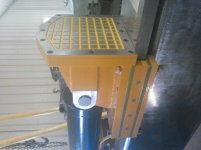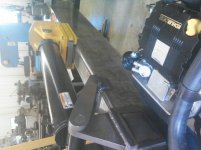franklin2
Gold Member
How big is your main beam? Have you used that before with success(or have seen others use it)? When I made my splitter, I didn't have a large enough I beam for the main beam. It was only like 3 inch I beam. So I had to make a "truss" below the beam to strengthen it. I used a 1/2"x6" thick piece of flat to rest the wood against(my wedge is on the cylinder) but found out that was not thick enough and had to double it up.
I found out a sure sign something is not strong enough is when you use the splitter, the split wood "flies" out of the splitter when you are using it. I found my wood laying on either side about 3 or 4 ft away from the splitter till I found the weak areas.
I found out a sure sign something is not strong enough is when you use the splitter, the split wood "flies" out of the splitter when you are using it. I found my wood laying on either side about 3 or 4 ft away from the splitter till I found the weak areas.





